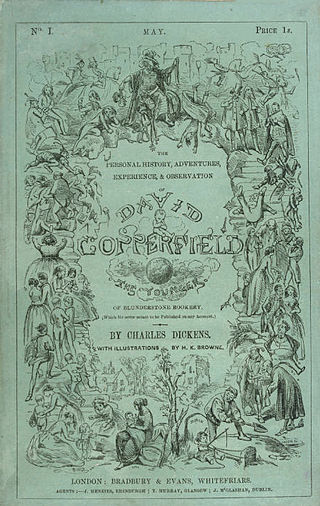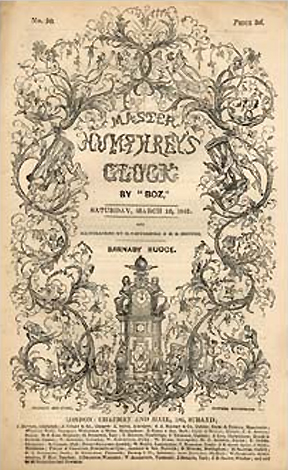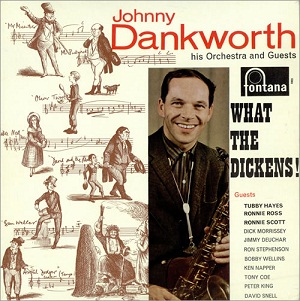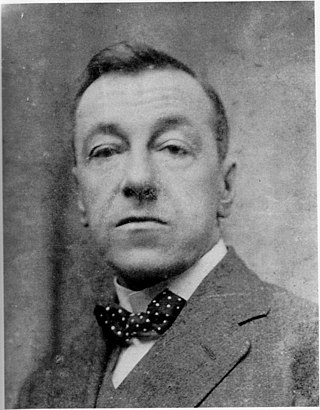
Charles John Huffam Dickens was an English novelist and social critic who created some of the world's best-known fictional characters, and is regarded by many as the greatest novelist of the Victorian era. His works enjoyed unprecedented popularity during his lifetime and, by the 20th century, critics and scholars had recognised him as a literary genius. His novels and short stories are widely read today.

David Copperfield is a novel by Charles Dickens, narrated by the eponymous David Copperfield, detailing his adventures in his journey from infancy to maturity. As such, it is typically categorized in the bildungsroman genre. It was published as a serial in 1849 and 1850 and then as a book in 1850.

Oliver Twist; or, The Parish Boy's Progress, is the second novel by English author Charles Dickens. It was originally published as a serial from 1837 to 1839 and as a three-volume book in 1838. The story follows the titular orphan, who, after being raised in a workhouse, escapes to London, where he meets a gang of juvenile pickpockets led by the elderly criminal Fagin, discovers the secrets of his parentage, and reconnects with his remaining family.

Sketches by "Boz," Illustrative of Every-day Life and Every-day People is a collection of short pieces Charles Dickens originally published in various newspapers and other periodicals between 1833 and 1836. They were re-issued in book form, under their current title, in February and August 1836, with illustrations by George Cruikshank. The first complete one volume edition appeared in 1839. The 56 sketches concern London scenes and people, and the whole work is divided into four sections: "Our Parish", "Scenes", "Characters" and "Tales". The material in the first three sections consists of non-narrative pen-portraits, but the last section comprises fictional stories.

The Posthumous Papers of the Pickwick Club was the first novel by English author Charles Dickens. Because of his success with Sketches by Boz published in 1836, Dickens was asked by the publisher Chapman & Hall to supply descriptions to explain a series of comic "cockney sporting plates" by illustrator Robert Seymour, and to connect them into a novel. The book became a publishing phenomenon, with bootleg copies, theatrical performances, Sam Weller joke books, and other merchandise. On its cultural impact, Nicholas Dames in The Atlantic writes, "'Literature' is not a big enough category for Pickwick. It defined its own, a new one that we have learned to call "entertainment". Published in 19 issues over 20 months, the success of The Pickwick Papers popularised serialised fiction and cliffhanger endings.

Augustus Snodgrass is a fictional character in Charles Dickens's first novel, The Pickwick Papers (1836). He considers himself a Romantic poet, though there is no mention of any of his own poetry in the novel.

Master Humphrey's Clock was a weekly periodical edited and written entirely by Charles Dickens and published from 4 April 1840 to 4 December 1841. It began with a frame story in which Master Humphrey tells about himself and his small circle of friends, and their penchant for telling stories. Several short stories were included, followed by the novels The Old Curiosity Shop and Barnaby Rudge. It is generally thought that Dickens originally intended The Old Curiosity Shop as a short story like the others that had appeared in Master Humphrey's Clock, but after a few chapters decided to extend it into a novel. Master Humphrey appears as the first-person narrator in the first three chapters of The Old Curiosity Shop but then disappears, stating, "And now that I have carried this history so far in my own character and introduced these personages to the reader, I shall for the convenience of the narrative detach myself from its further course, and leave those who have prominent and necessary parts in it to speak and act for themselves."

Hablot Knight Browne was an English artist and illustrator. Well known by his pen name, Phiz, he illustrated books by Charles Dickens, Charles Lever, and Harrison Ainsworth.

Frank Reynolds was a British artist. Son of an artist, he studied at Heatherley's School of Art. His work was part of the painting event in the art competition at the 1928 Summer Olympics.

Charley Bates is a supporting character in the Charles Dickens's 1838 novel Oliver Twist. He is a young boy and member of Fagin's gang of pickpockets, and sidekick to the Artful Dodger, whose skills he admires unreservedly. Bill Sikes's murder of Nancy shocks him so much that at the end of the novel he leaves London to become an agricultural labourer.

Burbank Animation Studios was an Australian film animation production company, formerly named Burbank Films Australia.

What the Dickens! is a 1963 recording by Johnny Dankworth, accompanied by his orchestra and guests, some of the leading UK jazz musicians of the day. It is a suite based on characters and scenarios associated with Charles Dickens. It was recorded in London on July 29 and 31, August 7, October 4, 1963 and released as a vinyl album.

Robert Seymour was a British illustrator known for his illustrations for The Pickwick Papers by Charles Dickens and for his caricatures. He committed suicide after arguing with Dickens over the illustrations for Pickwick.
Thomas Bentley was a British film director. He directed 68 films between 1912 and 1941. He directed three films in the early DeForest Phonofilm sound-on-film process, The Man in the Street (1926), The Antidote (1927), and Acci-Dental Treatment (1928).

Harold Copping was a British artist best known as an illustrator of Biblical scenes. His 1910 book The Copping Bible illustrated by himself became a best-seller.

Dickensian is a British drama television series that premiered on BBC One from 26 December 2015 to 21 February 2016. The 20-part series, created and co-written by Tony Jordan, brings characters from many Charles Dickens novels together in one Victorian London neighbourhood, as Inspector Bucket investigates the murder of Ebenezer Scrooge's partner Jacob Marley.
Frederick George Kitton was a British wood-engraver, author, and illustrator. He is best known for illustrating and editing the works of Charles Dickens.

Mary Scott Hogarth was the sister of Catherine Dickens and the sister-in-law of Charles Dickens. Hogarth first met Charles Dickens at age 14, and after Dickens married Hogarth's sister Catherine, Mary lived with the couple for a year. Hogarth died suddenly in 1837, which caused Dickens to miss the publication dates for two novels: The Pickwick Papers and Oliver Twist. Hogarth later became the inspiration for a number of characters in Dickens novels, including Rose Maylie in Oliver Twist and Little Nell in The Old Curiosity Shop. Charles and Catherine Dickens' first daughter was named Mary in her memory.

Thomas Onwhyn was an English artist, illustrator, engraver, satirist, and cartoonist. He also published an illustrated pirate edition of The Pickwick Papers in 1837 under the pen-name of "Samuel Weller", after Dickens's character in the book. He may have also used other pseudonyms including Peter Paul Palette. He also published tourist guides to various parts of England and Wales.

































